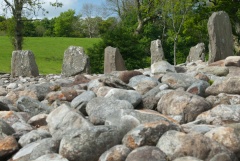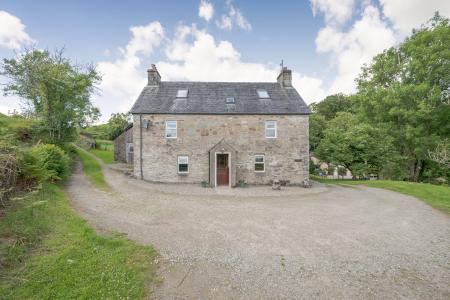
The north circle was built sometime prior to 3000 BCE and was then replaced by the second, southern circle. During the ensuing centuries, the northern circle was covered with the peat that gradually built up on the floor of the glen, so that no trace of it remained. It was only when the southern circle was excavated that archaeologists realized they were standing on a second circle.
The first development at Temple Wood was a timber structure on the site of the northern circle. The structure had two sets of two large posts aligned with each other on a north-south axis. The timber posts were then replaced by upright stones, but it seems the circle was left unfinished and a new, larger circle begun to the south. The central stone of the north circle suggests an alignment with the movements of the sun, and the northernmost stone in the circle is carved with a spiral, suggesting sun worship.

(note the spiral carvings on the
nearest stone)
Around 1700 BCE the standing stones of the south circle were joined by interval slabs, suggesting that access to the interior of the circle was intentionally restricted or cut off. At the same time, an outer raised bank supported by small stones was added. A second spiral was added to the northernmost stone, perhaps because the earlier spiral was partially obscured by the new bank.
A central cairn was added to the centre of the circle between 1400-1200 BCE. At the same time, a small cairn was added between the central cairn and the edge of the circle. Both cairns within the circle were then covered with a layer of stones and a cremation added.
The peat then moved in and gradually covered much of the site. Some of the stones were taken away during the medieval period. During the 19th century, a layer of fieldstones was dumped within the circle, partially obscuring the earlier remains.
The remains at Temple Wood are only a small part of the extraordinary array of prehistoric monuments in Kilmartin Glen. A short stroll away in the direction of Kilmartin village are the burial mounds of Nether Largie, while to the south are a series of standing stones at Lady Glassary Wood.













